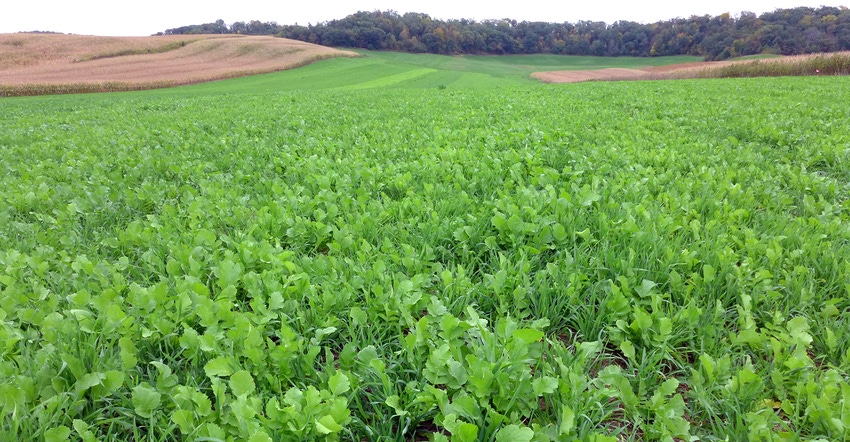October 25, 2017

By Michael Travis
Resilience is defined as the ability to spring back, or to recover easily from change or misfortune. Change abounds in farming, and it can often feel like misfortune is lurking around the corner. Weather difficulties, input costs, market challenges, or what may seem like just bad luck, can impose undue hardship on a farm operation and stress for the farmer.
Whether you are a crop farmer or livestock farmer raising your own feed, the soil is the foundation of your farm and your greatest asset in building resilience. Farm resilience is built upon healthy soil, a hot topic these days — yet we really have only begun to understand what makes soil healthy. And no matter what the current state of your farm’s primary asset is, there is always room for improving the health of this basic yet extremely complex miracle we call soil. As you consider building greater resilience into your farm, let’s focus on two key components of soil health: organic matter and biological diversity.
Organic matter
Organic matter is much more than a percentage given on a soil test report. This component feeds and houses thousands of different species and billions of individual organisms within a handful of soil. Soil organic matter consists of fresh crop residue from this year, and may also include material that is tens, hundreds, even thousands of years old. Organic matter is a storehouse of nutrients that can be made available for plant use, and helps provide structure to soil by both holding it together and providing crucial space for air and water storage and movement.
Soil management decisions will determine whether you build, maintain or lose organic matter each year, and whether the existing organic matter is able to provide its valuable functions. Tillage quite literally burns up organic matter. Reducing or eliminating tillage and maintaining surface residue helps build soil organic matter and foster soil life.
It has been shown that the high use of nitrogen fertilizer makes it virtually impossible to build the organic matter content of soil. Slowly reducing your nitrogen input in conjunction with other soil management strategies can both maintain crop yield and add organic matter.
Recent research suggests that maintaining living roots throughout the year may build soil organic matter more effectively than adding crop residue to the soil. Plants transfer as much as one-fourth of the carbohydrate energy built by photosynthesis into the soil, which feeds soil life and adds organic matter. Planting cover crops at the end of the production season helps maintain living roots throughout the year, and is a crucial component of a program that builds organic matter and improves soil resilience.
Biological diversity
Soil is recognized as the most biologically diverse and least understood ecosystem in the world. The value of this diversity for the farmer lies in the roles that many soil organisms play in plant disease suppression, improved nutrient availability, nitrogen fixation and soil water management. Maintaining biodiversity, however, is one of the biggest challenges a farmer faces. Growing an annual crop typically necessitates planting a monoculture. Such a system reduces the diversity below the surface, as well.
So how can we promote biodiversity and still produce a harvestable crop? Establishing a rotation provides diversity from year to year. Beyond this, cover crops again come to our aid. Planting a cover crop following the main crop introduces diversity within the same growing season. Innovation with interseeding cover crops directly into a primary crop allows farmers to overlap diversity within the main growing season.
Using mixes when planting a cover crop further boosts diversity. Diversity in crop production directly translates into diversity of soil residents such as bacteria, fungi and insects. In the same way that diversity of financial investment improves the potential for consistent return, diversity of the soil’s organisms improves consistency and resilience in crop production.
In today’s economic and environmental climate, resilience is crucial for productivity and profitability. Setting goals and making management decisions to build soil organic matter and increase biological diversity will improve your farm’s resilience and profitability.
Travis is the Extension ag agent in Pepin County, Wis.
You May Also Like




